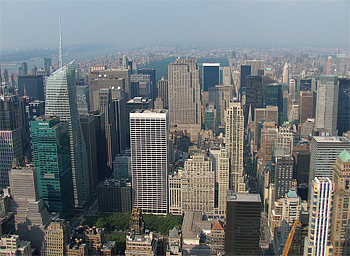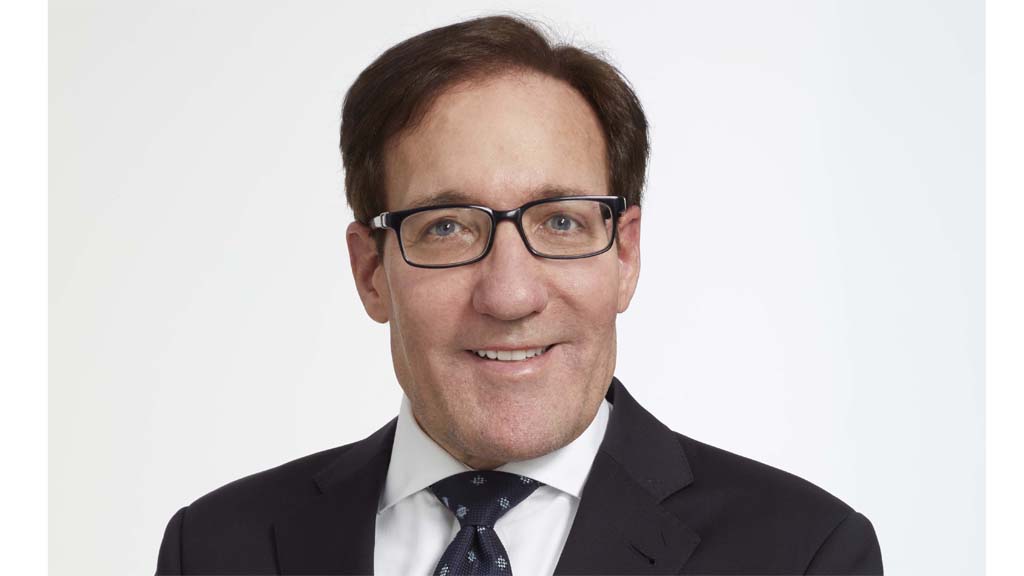
Fifty years ago, "indoor" TV reception was limited to watching a glowing CRT in a TV set hooked up to some 300 ohm ribbon line connected to an antenna on the roof.
Now, with the introduction of ATSC mobile DTV, broadcasters are looking for ways to improve indoor reception on small portable and handheld devices, not only in homes, but in office buildings, transportation hubs such as subway stations, shopping malls and sports arenas.
This month I'll discuss ways to improve indoor reception on handheld/portable devices and the tradeoffs between them, with a focus on what may be the easiest and fastest way to get broadcast signals into buildings.
My article "DTV in the House, Part 1" cites studies showing building attenuation ranging from 10 dB to more than 20 dB. While ATSC mobile DTV is able to work at lower signal-to-noise ratios than conventional ATSC, much of that advantage is lost due to inefficient antennas on handheld devices; varying polarization as the device is moved; internal noise generated in the device; and external noise from switching power supplies and other devices indoors.
Anyone who has had their cell phones drop calls inside a building knows broadcasters aren't the only services dealing with building attenuation issues. You may have noticed over the last 15 years the number of spots where cell phones don't work inside has dropped. An example familiar to NAB Show attendees is the area in the Hilton near the Paradise Cafe. Some years ago, the dropped call problem there disappeared. What can we learn from that?
Policemen and firemen also have problems communicating inside buildings. Over the last 10 years many municipalities have adopted building codes requiring new construction provide reliable first-responder communication capability throughout some percentage of the building. Can broadcasters benefit from this technology?
METHODS FOR IMPROVING INDOOR RECEPTION
The obvious solution is to increase the signal level outside the building enough to overcome building attenuation and indoor noise. Studies have shown a field strength of about 65 dBµV/m or more is needed for reliable outdoor reception on current ATSC-MH handheld devices.
Remember this is the field strength at the receiver's antenna, perhaps four feet above the ground, with shielding from surrounding obstructions, not the levels typically used for broadcast coverage studies based on an antenna height of 30 feet and no local obstructions.
This means 85 dBµV/m or greater field strength is needed outside buildings to provide indoor reception, assuming 20 dB building attenuation. If building attenuation is greater, perhaps due to reflective window tinting added for energy efficiency, even 85 dBµV/m may not be enough. Add in noise generated inside the building and the signal strength required outside the building could start to approach 100 dBµV/m!
The good news is that for higher floors on a building, there are fewer obstructions and results from broadcast-coverage prediction models will be closer to reality than on the ground.
Outdoor field strength can be increased by boosting power, optimizing antenna patterns, and putting more energy into the air through the use of elliptical or circular polarization. Unlike the other options I'll discuss, any improvements to the main transmission facility are not limited to specific neighborhoods, but will improve the signal over the entire service area.
One problem is that the amount of improvement will be limited, either by interference or by the FCC limits on maximum ERP. When the desired coverage area is obstructed it may not be possible to boost power enough for reliable indoor handheld reception.
Another option is to move the transmitter closer to the building, avoiding obstructions from terrain and other buildings, using an on-channel repeater or distributed transmission system. In last month's column I used downtown Los Angeles as an example of how an on-channel repeater could be used to boost the signal in a small area.
On-channel repeaters have the advantage of not only increasing the signal to viewers inside nearby buildings, but also providing a much stronger signal on the streets between buildings for pedestrian and mobile reception. The negative include power limitations due to FCC rules and the need to avoid interference to the main signal, and additional, perhaps expensive, rooftop real estate for the repeaters. Translators would avoid the self-interference and allow somewhat higher power, but finding spectrum for them in an urban area is likely to be difficult.
That brings us to the third option—distributed antenna systems. Public safety communications systems rely on multiple transmitters' different locations throughout the community, but encounter the same problems with indoor communications as broadcasters have with indoor reception.
To allow communications deep inside buildings, in stairwells and basement equipment rooms, building owners are installing distributed antenna systems. In the simplest form, these consist of base stations or repeaters that, instead of being connected to an outdoor antenna, are connected to antennas distributed throughout the building.
Could the same technology be used to improve mobile DTV indoor coverage?
DISTRIBUTED ANTENNA SYSTEMS
There are many different ways to build a distributed antenna system. One of the first uses was in tunnels, where an antenna picked up broadcast signals and amplified them before retransmitting them over a leaky coaxial cable in the tunnel.
A repeater can be connected to the leaky coax to allow public safety communications. Later system designs for buildings used repeaters and cell phone base stations connected to a passive splitter system feeding antennas at specific locations throughout the building. Hybrid DAS systems add amplifiers at other points in the system to overcome loss in the coax.
Distributing signals over a wide frequency range through a large facility using coaxial cable becomes difficult as coax losses increase. Unintended radiation from the coaxial cable can create interference. The latest technology uses fiber-optic cables to distribute the signal from the base stations and repeaters to distributed antennas.

In these systems, the RF from PCS and cell phone base stations, public safety repeater systems are attenuated to safe power levels for the system, combined and applied to a fiber-optic transmitter. At the other end of the fiber, which could be miles away, a fiber-optic receiver converts the optical signal back to RF and applies it to an amplifier connected to the remote antenna.
For two-way communications, a receiver and fiber-optic transmitter at the remote antenna send the signal back to a fiber-optic receiver where it is converted back to RF and fed to receivers in the repeaters and cell phone base stations. Systems can use two fibers or a single fiber with wavelength division multiplexing for bidirectional systems.
DAS FOR BROADCASTERS
In looking at the limited number of DAS designs I was able to find on the Internet, it appears possible to add broadcast signals to passive and hybrid DAS systems and perhaps fiber DAS as well.
In fiber-optic systems, the bandwidth and power handling capability of the system is likely to be a limiting factor. While a fiber system can work at VHF frequencies down to 100 MHz, the specifications on the DAS installations I've found usually start at 470 MHz. In any system, the bandwidth of the distributed transmit antennas will be a factor. It is hard to make VHF antennas inconspicuous!
Due to the need to control levels and maintain quality, I don't think a simple off-air antenna and preamplifier will be sufficient to feed a DAS. Distributed antenna systems are owned either by the building or by communications site owners, including American Tower and Crown Castle.
The DAS operator is unlikely to allow anything on their system that could disrupt other services. If a good off-air signal is available, an on-channel repeater like the ones I described in "ATSC Digital On-channel Repeaters at NAB Show" (RF Technology, June 9, 2010) should work well. The Hutech21 HT-DOC60M pico-repeater seems ideal for this.
VHF stations may be able to get on UHF-only DAS using translators. This raises another question: how will the FCC license broadcast DAS systems? The simplest approach would be to consider them as an on-channel booster. Interference is not likely to be a problem and could probably be ignored, except for out-of-band interference to other services.
I'll have more on DAS in future columns and hope, at some point, to be able to test mobile DTV over a DAS. It isn't quite as simple as it sounds. Until then, take a look at the best technical introduction I found on DAS from Jack Daniel at The Jack Daniel Co., available at www.rfsolutions.com/fo-rf1.htm.
Comments? Questions? E-mail me atdlung@transmitter.com.
The professional video industry's #1 source for news, trends and product and tech information. Sign up below.

Doug Lung is one of America's foremost authorities on broadcast RF technology. As vice president of Broadcast Technology for NBCUniversal Local, H. Douglas Lung leads NBC and Telemundo-owned stations’ RF and transmission affairs, including microwave, radars, satellite uplinks, and FCC technical filings. Beginning his career in 1976 at KSCI in Los Angeles, Lung has nearly 50 years of experience in broadcast television engineering. Beginning in 1985, he led the engineering department for what was to become the Telemundo network and station group, assisting in the design, construction and installation of the company’s broadcast and cable facilities. Other projects include work on the launch of Hawaii’s first UHF TV station, the rollout and testing of the ATSC mobile-handheld standard, and software development related to the incentive auction TV spectrum repack. A longtime columnist for TV Technology, Doug is also a regular contributor to IEEE Broadcast Technology. He is the recipient of the 2023 NAB Television Engineering Award. He also received a Tech Leadership Award from TV Tech publisher Future plc in 2021 and is a member of the IEEE Broadcast Technology Society and the Society of Broadcast Engineers.
